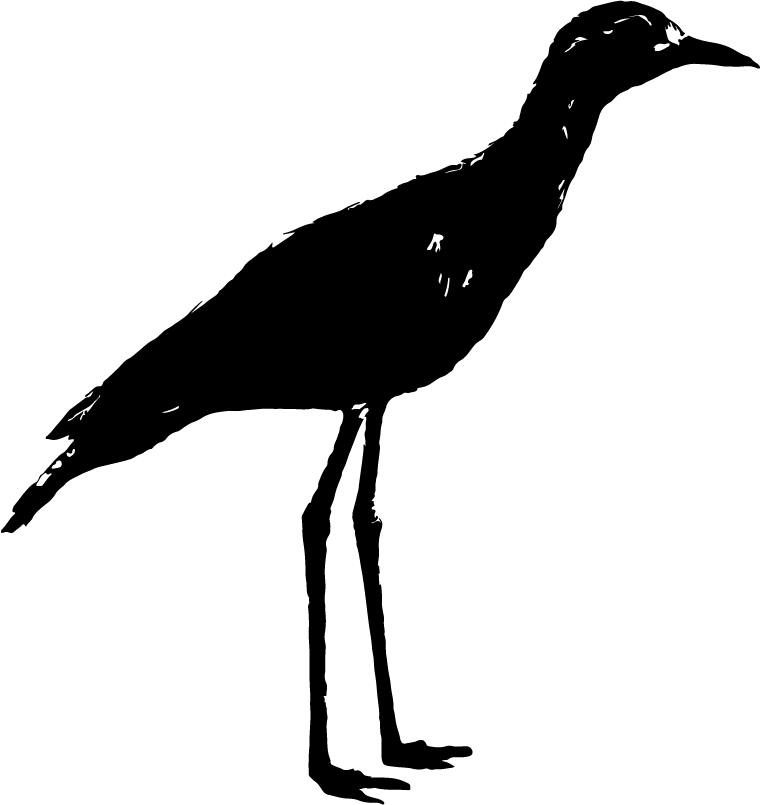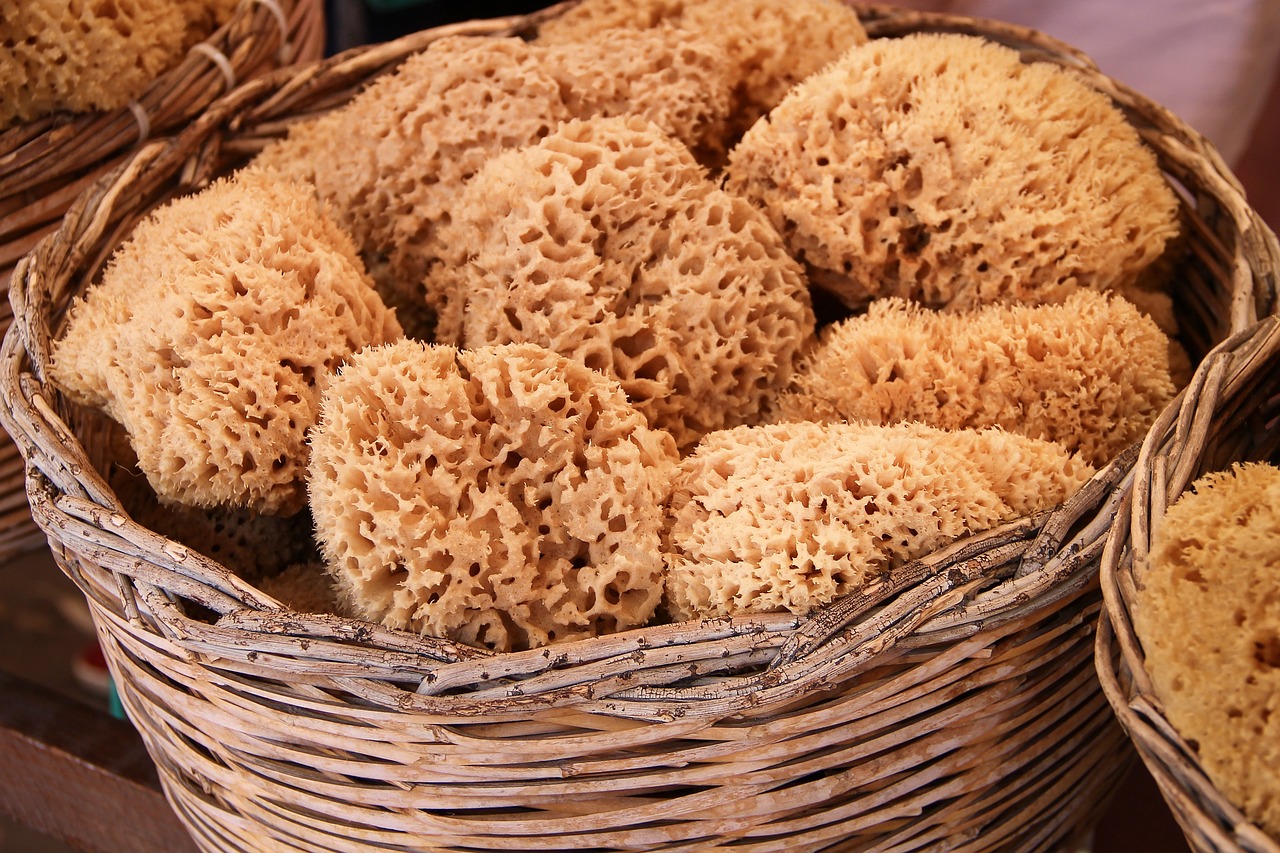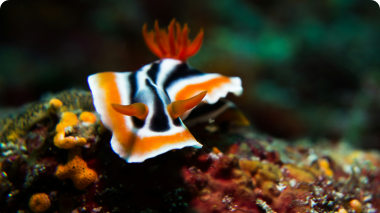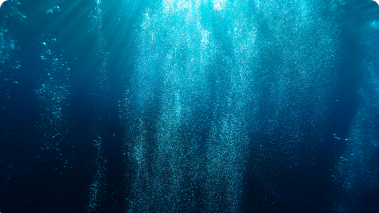Are you someone that uses a loofah to wash with? Proclaiming about their wholesome exfoliating benefits. Or maybe the exotic pouf or humble flannel is more your thing? Perhaps though, if you’re feeling those all natural and organic vibes, you might opt to wash yourself with a sponge? By which I do mean a bath sponge and not the manky dish sponge that sits by your sink.
But let’s just take a step back for a moment – this bath sponge, branded as authentic and ‘natural’, what is it? It’s a natural what exactly? Did it organically grow in an ancient forest somewhere? Or maybe it formed through millions of years, like aged rocks, harvested from mountainous caverns like Himalayan rock salt? The reality is not so pretty. Apologies for the bluntness, but that wholesome bath sponge hanging in the shower is a dried and bleached, dead marine animal. Wait, so it’s not even organic?
Bath sponges are animals. Which means we are somewhat related to these weird spongey blobs and share around 70% of our genes with them. However, they’re not the kind of animal that resembles anything like the happy farmyard animals, or majestic safari animals we learn about at school. Rest assured for the luxury bathers among us, sponges do not possess a brain or a nervous system. They have no organs, no muscles, and not even tissues. Then what do they have?
Sponges are essentially just a mass (or lump) of organised cells. This is sounding less impressive than the yeast bubbling away in your jar of sourdough starter. However, sponges are not all homogenous like the sourdough starter; they possess multiple different types of cells, specialised for diverse functions. And, amazingly, with some highly effective organisation, they arrange these cells into a living, ‘breathing’ animal that eats, shits, and reproduces. Now that sounds like an animal.
So, was cleaning always written in the stars for these strange animals? Sponges are aquatic, living most their lives attached to rocks or rubble close to the sea floor. Yet even here, within their natural home they’re renowned as cleaners of the sea. A single sponge will filter through thousands of litres (up to 20,000 X their own volume) of water every day, mopping up all the tiny particles that are too small for other animals to process. All those holes (pores) that make sponges so, well spongey, and convenient for bathing draw in microscopic food and pump out the waste! It’s a bit like an air filtration unit, except sponges make use of the particles they capture, harnessing energy within their metabolisms.
But do not make the mistake of overlooking these naturally humble cleaners. Sponges are some of the oceans’ greatest unsung heroes. Nested amongst the vibrant oranges, violets, and yellows of tropical coral reefs are the dull grey or brown sponges. Like a quiet but steady hum, their constant filtering helps maintain crystal clear turquoise waters and reconstitutes the dissolved ‘dirt’ (organic matter) into much needed food for corals, fish and other small animals. Even on land, we too can reap the cleansing benefits from sponges in more ways than one! Coastal oyster and mussel farms such as those in northern France increasingly suffer from pollutants leaching into the waters, making their harvest unsafe for consumption. However, in a process known as bioremediation, scientists are researching how sponges can absorb pollutants like heavy metals, extracting these toxins from the water much like kidneys do in your body.
Our history with sponges is ancient, dating back 3300 BCE in the Mediterranean to Egyptian and Phoenician civilisations. Our predecessors had somewhat more creative uses for sponges including, soaking them in honey to suckle babies, as a popular contraceptive when soaked in lemon juice and vinegar, and even being consumed as food – marketed as sea liver or kidney (‘fegato de mare’ or ‘rognone di mare’) in 19th century Italy. However, 19th and 20th century mass sponging industries off the coasts of Florida and the Greek islands proved that bath sponge trade is not sustainable. Since sponges are slow growers, and for the most part immobile, they’re easily overexploited which has damaging effects on local marine ecosystems. Indeed, as well as being cleaners of the sea, sponges provide essential structural stability for coral reefs, core habitats for small crustaceans, nurseries for juvenile fish, and food for larger animals like hawksbill turtles or parrotfish.
But what then to do about bath time? Small scale sponge farms provide one sustainable way ahead. Sponges are master regenerators and may be clonally grown by cutting off small pieces and letting these then develop into marketable sized sponges. Some sponge farming projects have also been hugely successful in benefiting small coastal communities such as in Zanzibar; creating jobs that have provided women a lifeline of financial independence. However, on large scales this is no perfect solution; as with any fish farm, the threat of spreading deadly diseases greatly increases.
So, alternatively, why not opt for the natural loofah? Although, the texture is not quite the same, but they still retain excellent exfoliation, plus they’ll survive a few cycles through your washing machine. Unlike sponges, loofahs are not animals, but are instead sourced from a dried-out fruit related to cucumbers and courgettes. And, if you’re keen enough, you can even grow your own!
Sponges are one of the most ancient animal groups of our planet; having been around for more than 800 million years, they have nearly lived through it all. So either way, whatever your bathing desires, likely this unique animal will keep doing their job, keep on cleaning, and keep on living –making the most of the small things in life.







